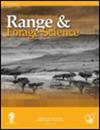Herbicide trials on Campuloclinium macrocephalum (Asteraceae) during adverse conditions reveal incompatibility with biocontrol and a narrow window of opportunity for chemical control
IF 1.9
4区 环境科学与生态学
Q3 ECOLOGY
引用次数: 1
Abstract
Herbicide trials on pompom weed Campuloclinium macrocephalum (Less.) DC. (Asteraceae) were carried out in grasslands with xeric and hydric soils, at sites in Gauteng, South Africa, from 2005 to 2008. The rust fungus Puccinia eupatorii Dietel, an established self-perpetuating biocontrol agent on C. macrocephalum, caused significant damage to shoots in late summer and autumn. Herbicide efficacy was significantly better on foliage that did not already present symptoms and that was sprayed in early summer compared with on infected plants treated in autumn, at both the xeric (F = 36.71, p < 0.001) and hydric (F = 3.59, p = 0.031) sites. This pathogen has reduced the time available for effective chemical weed control from six months to three months. However, none of the herbicide treatments achieved commercially acceptable mortality rates of ≥80%, and after three annual applications none succeeded in extirpating C. macrocephalum from the plots. Regression analyses of count data showed that metsulfuron-methyl at 45 g ha–1 (USD 20.05 ha–1), picloram at 252 g ha–1(USD 25.47 ha–1) and 2,4-D/dicamba/MCPA at 540/360/474 g ha–1 (USD 45.41 ha–1) required five annual treatments in summer to eradicate C. macrocephalum, whereas 2,4-D amine at 1 440 g ha–1 (USD 13.65 ha–1) and MCPA at 1 200 g ha–1 (USD 14.46 ha–1) required six treatments. Hence, there is a trade-off between the use of slightly more effective herbicides against the lower costs of other selective herbicides.在不利条件下对菊科植物Campuloclinium macrocephalum (Asteraceae)进行除草剂试验,结果表明其与生物防治不相容,化学防治的机会窗口很窄
玉米蓬草(Campuloclinium macrocephalum)除草剂试验直流。2005 ~ 2008年,在南非豪登省干湿土壤草地上进行了菊科植物的研究。在夏末和秋末两季,大头藤(C. macrocephalum)的芽部受到锈病菌(Puccinia eupatorii Dietel)的显著损害。在旱地(F = 36.71, p < 0.001)和旱地(F = 3.59, p = 0.031),初夏施药对未出现症状的叶片的除草剂药效显著优于秋季施药。这种病原体使有效化学除草的时间从6个月减少到3个月。然而,没有一种除草剂处理达到商业上可接受的≥80%的死亡率,并且在每年施用三次后,没有一种除草剂能成功地从地块中清除巨头草。计数数据回归分析表明,45 g ha-1 (20.05 ha-1)、252 g ha-1 (25.47 ha-1)、2,4- d /麦草畏/MCPA (540/360/474 g ha-1) (45.41 ha-1)夏季需5次处理才能根治巨头线虫,而1 440 g ha-1 (13.65 ha-1)和1 200 g ha-1 (14.46 ha-1)的2,4- d胺需6次处理。因此,在使用效率稍高的除草剂与成本较低的其他选择性除草剂之间存在权衡。
本文章由计算机程序翻译,如有差异,请以英文原文为准。
求助全文
约1分钟内获得全文
求助全文
来源期刊

African Journal of Range & Forage Science
ECOLOGY-ENVIRONMENTAL SCIENCES
CiteScore
4.00
自引率
14.30%
发文量
35
审稿时长
>12 weeks
期刊介绍:
The African Journal of Range & Forage Science is the leading rangeland and pastoral journal in Africa. The Journal is dedicated to publishing quality original material that advances rangeland ecology and pasture management. The journal aims to publish research of international importance from any region, but as an African journal, we are particularly interested in research from Africa and relevant to the continent. The Journal promotes both science and its application and authors are encouraged to explicitly identify the practical implications of their work. Peer-reviewed research papers and research notes deal primarily with all aspects of rangeland and pasture ecology and management, including the ecophysiology and biogeochemistry of rangelands and pastures, terrestrial plant–herbivore interactions (both domestic and wild), rangeland assessment and monitoring, effects of climate change on rangelands, rangeland and pasture management, rangeland rehabilitation, ecosystem services in support of production, conservation and biodiversity goals, and the identification and development of intensive and semi-intensive pasture and forage resources to meet livestock production needs. Articles highlighting transdisciplinary linkages among biophysical and social sciences that support management, policy and societal values are particularly encouraged. The Journal includes relevant book reviews and invited perspectives that contribute to the development of range and forage science. Letters to the editor that debate issues raised in the Journal are acceptable. The African Journal of Range & Forage Science is the official journal of the Grassland Society of Southern Africa.
 求助内容:
求助内容: 应助结果提醒方式:
应助结果提醒方式:


